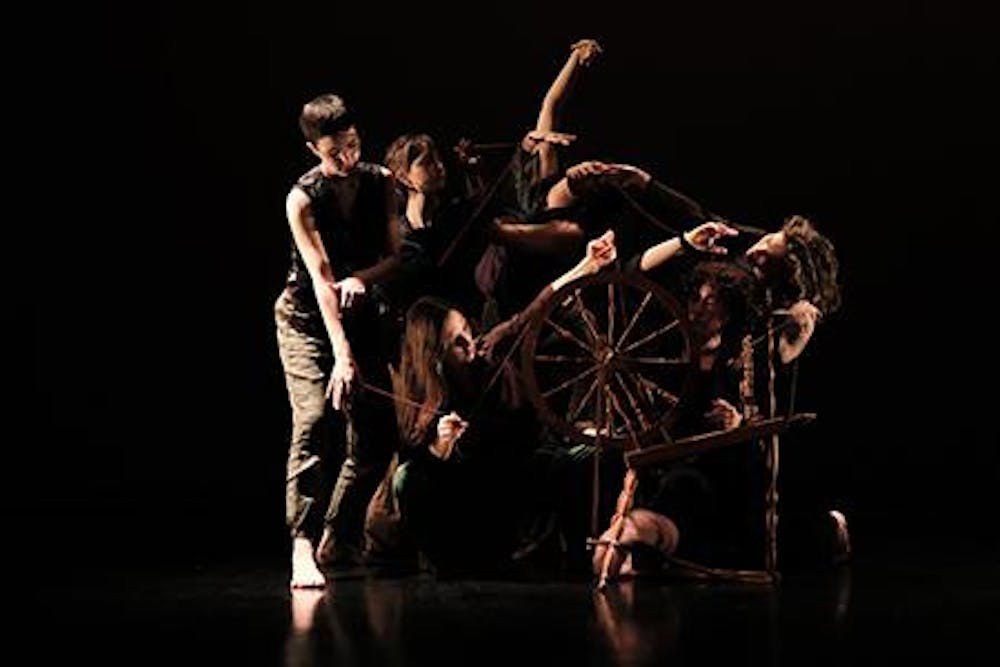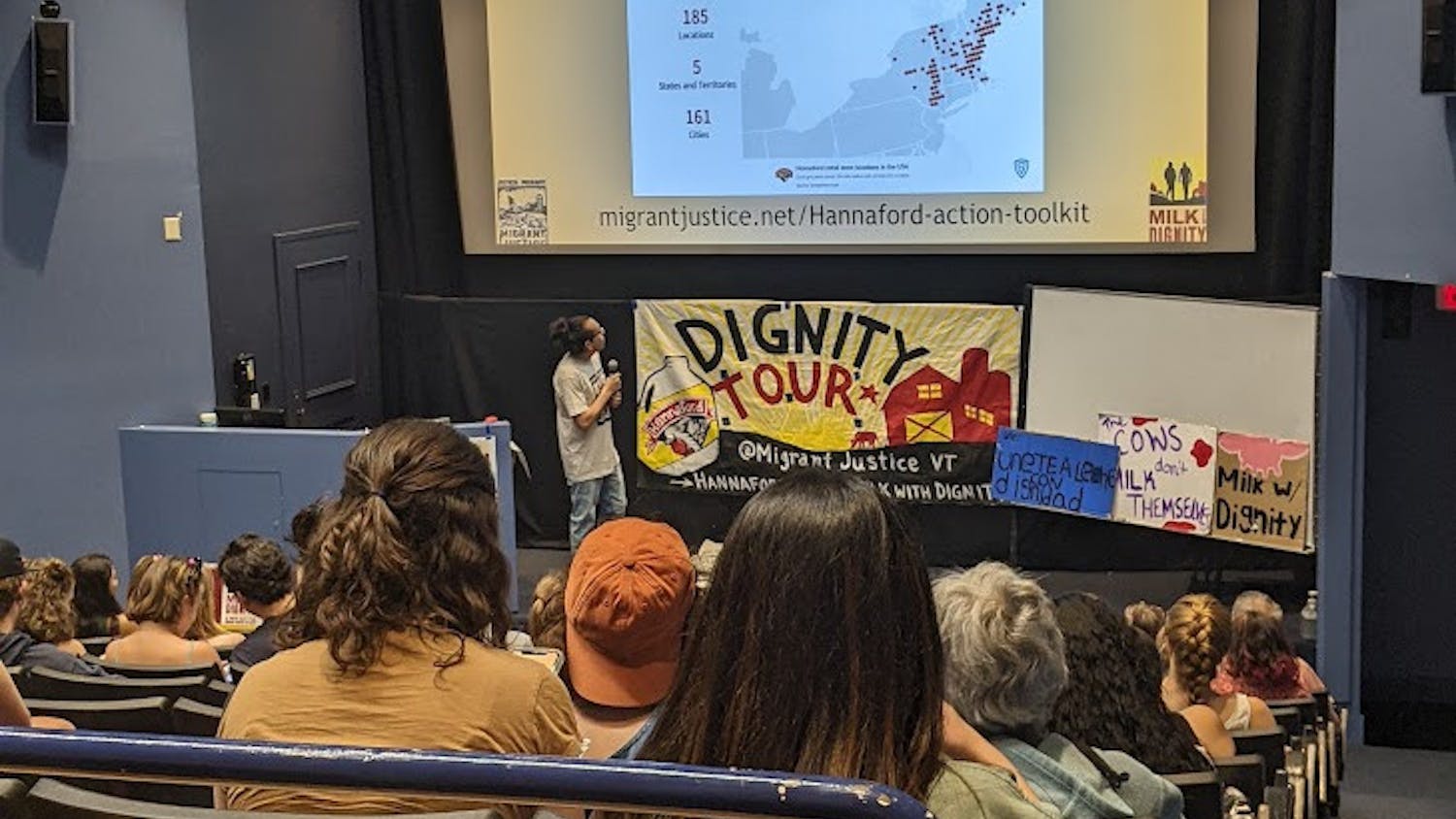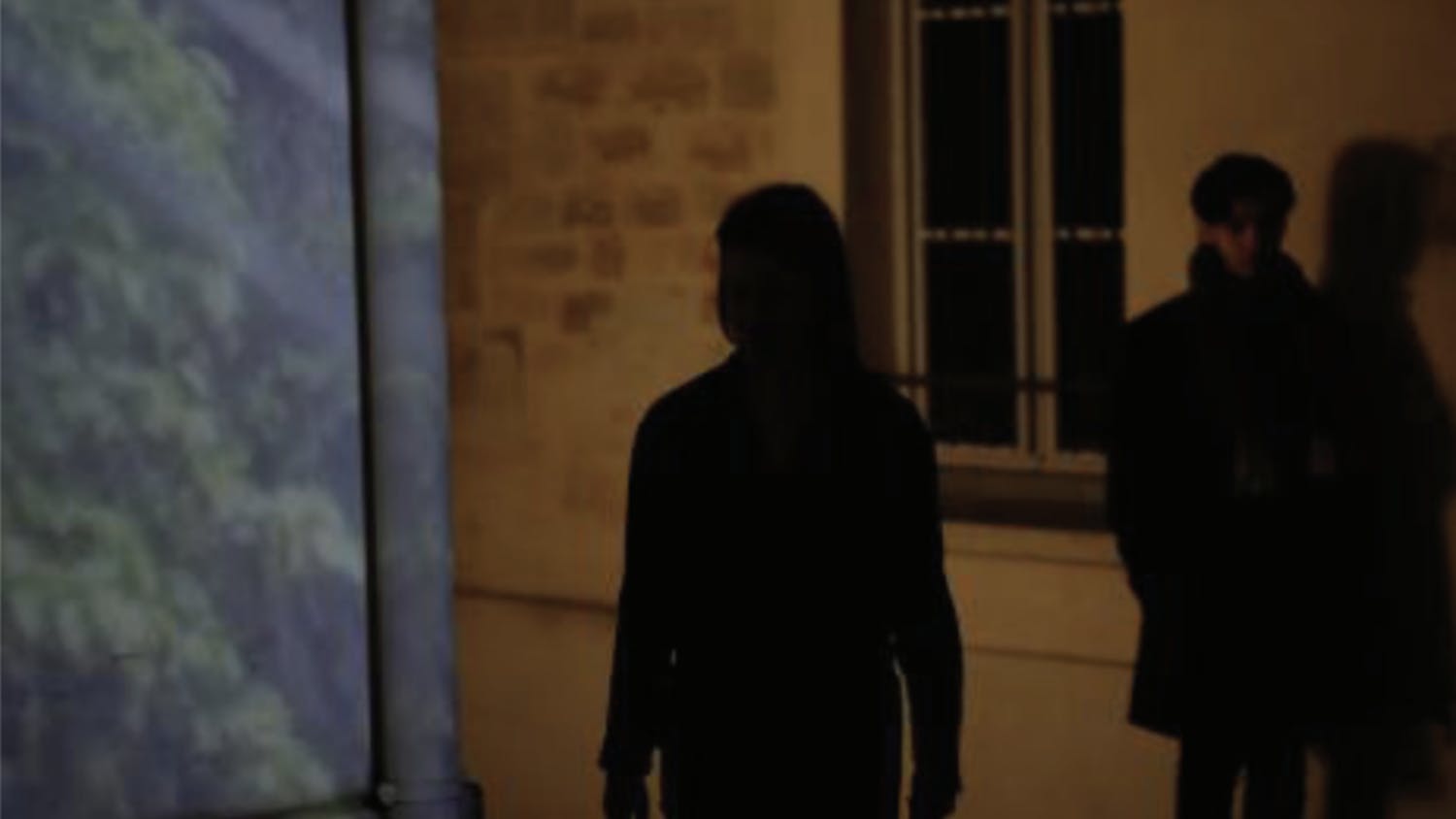Nothing about the ambience of the Dance Theater in the Mahaney Arts Center (MAC) during the evenings of April 5 and 6 felt normal. Four dancers with solemn faces floated throughout the packed audience before the start of each show. When the lights dimmed, the dancers left the aisles and stood in still uniformity before the crowd. Then, everything went dark. As the percussive sounds of the music grew louder, a sense of anticipation filled the room.
“The FitnessGram Pacer Test is a multistage aerobic capacity test that progressively gets more difficult as it continues,” said a voice over the speaker system at the start of the first dance. The audience bursted out into laughter as the iconic voice from gym class filled the room, and dancers found their seats in tightly-packed chairs and pretended to write. As the traumatic “dings” of the FitnessGram grew faster and faster, the dancers shuffled around the stage switching between random bodily contortions and seemingly academic motions such as writing.
Hannah Laga Abram ’23 and Graham Shelor ’23 put on a double showcase entitled “Ricochet” wherein they each choreographed different dances as part of their senior theses. The performance’s first dance was choreographed by Shelor as a part of his larger showcase “Someday, We Will Learn to Release,” which is described in the playbill as “a facilitated disruption of dictated movement.”
The performance’s theme of disruption became more evident when another dance number was accompanied by the “Cha Cha Slide,” a song notorious for its prescriptive and somewhat robotic movements of moving one leg or hopping once, which drew lots of laughs from the audience. This was fitting within Shelor’s choreography, which showed how free and joyous the dancers were once they did other forms of dance that allowed them to disrupt normal ways of movement that are dictated in many ways through societal constructs. The dance piece resonated with Mel Leider ’23 who was struck by how Shelor’s work invited a conversation about expectations.
“I felt myself projecting my own subjective experience to guess when the next disruption would happen in the dance, and I constantly felt tricked,” said Leider.
The show took on a new character after the intermission with Laga Abram’s first piece featuring only the faint sound of Viv Merrell ’23 spinning wool on a spinning wheel onstage. Six dancers including Laga Abram used words, song and movement to craft a layered landscape of sound and shape. The piece was accompanied by a video that offered a glimpse into the ethnographic fieldwork done by Laga Abram investigating the selkie — a folk legend that has its origins in Ireland — through dancing in various coastal sites in western Ireland.
Though they appeared dissimilar aesthetically, the two theses shared themes of crossing lines and boundaries in a way that informed the name of the production “Ricochet.” After the performance on Friday, there was a short question and answer section at the end moderated by Visiting Assistant Professor of Dance Lida Winfield. Winfield outlined just how intensive the rehearsal process is for the thesis students, describing their choreography sessions with dancers multiple times a week, process outline meetings with dance teachers and technical meetings about the show’s logistics.
“Throughout the [rehearsal] process, there were certain parts of the dance, especially improv, that I was not completely comfortable with in the beginning, but it got a lot easier as time went on, and during the performance I didn’t feel restricted at all,” said Evie Happel ’26, who danced in Shelor’s thesis.
For Laga Abram, the process was also about translating her findings and questions from Ireland into material the dancers could work with. She did this by asking questions of the dancers and watching how their bodies inhabited them. Some of those questions were: “How do you tell a story with your hands, what texture is it?” and “What is your skin made of?” In describing what the first few rehearsals were like, she fondly remembered the beautiful process that unfolded in exploring these questions.
“For the first few weeks, I would say the same prompt every time: be a slug eating chocolate through every pore of your skin,” Laga Abram said.




